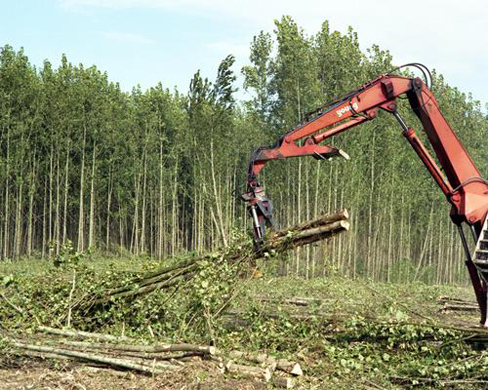Woody Biomass for Energy
Biomass, when used in reference to renewable energy, is any biological (plant or animal) matter that can be converted to electricity or fuel. Woody biomass refers to biomass material specifically from trees and shrubs. It is most often transformed to usable energy by direct combustion, either alone or co-fired with coal; however, efforts are underway to develop methods to cost effectively convert woody material to liquid fuels.
Marketing
Potential woody biomass producers must be located near a viable market for their products. Efficient and economical transportation to the market outlet is critical for marketing success. Producers interested in woody biomass production should be developing a transportation and logistics plan for delivering their product to market before planting. Multiyear marketing contracts can also help guarantee a longer-term market for a perennial crop. Relying solely on one market outlet is a weakness in marketing farm products and the same is true for woody biomass. Producers should have more than one market possibility for woody biomass products.
Production
 Two of the most desirable characteristics of trees for woody biomass plantations are rapid growth rate and ability to be coppiced. Coppicing is a management tool in which a tree is cut near ground level and sprouts are allowed to develop from the stump. This enables the tree to regenerate without having to be replanted after each harvest. In addition to growth rate and sprouting capabilities, trees for biomass should be high yielding in terms of dry tons of wood produced per acre. Other desirable characteristics include: widely adaptable, vegetatively propagated, easy to establish, hardy, and disease and insect tolerant. Lignin content and wood density are also important considerations. It is unlikely that any one species will meet all of Kentucky’s biomass needs.
Two of the most desirable characteristics of trees for woody biomass plantations are rapid growth rate and ability to be coppiced. Coppicing is a management tool in which a tree is cut near ground level and sprouts are allowed to develop from the stump. This enables the tree to regenerate without having to be replanted after each harvest. In addition to growth rate and sprouting capabilities, trees for biomass should be high yielding in terms of dry tons of wood produced per acre. Other desirable characteristics include: widely adaptable, vegetatively propagated, easy to establish, hardy, and disease and insect tolerant. Lignin content and wood density are also important considerations. It is unlikely that any one species will meet all of Kentucky’s biomass needs.

